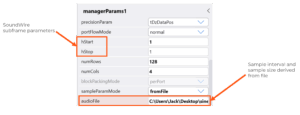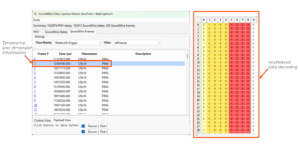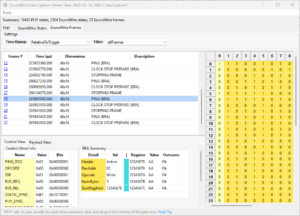
Technical Insights
What Makes MIPI SoundWire a Game-Changer for Audio Connectivity?
5 min

The sound systems we interact with daily are anything but simple. Even something as routine as listening to music through earphones depends on many layers of digital signal processing and intelligent routing. It’s all designed to create a seamless experience, but behind the scenes, an intricate network of components and communication protocols work to manage sound in increasingly compact devices.
To enable such complex and low-power transport systems, many designs use a modern audio interface protocol called MIPI SoundWire. The MIPI Alliance describes this specification as “a common, comprehensive interface and scalable architecture that can be used to enable audio features and functions in multiple types of devices and across market segments.” According to Electronic Design, SoundWire’s scalable, low-power, low-latency, and lower complexity features contribute to saving 40% more power than traditional audio interfaces. You can learn more about the key features of SoundWire from our previous blog post.
Keep reading to learn how to leverage SoundWire’s audio system complexity using the SV6E-X Mid-Frequency Digital Test Module.
To properly implement the rich SoundWire protocol, it is important to have a test instrument that can not only ensure compliance with the specification, but also help a designer investigate how to optimize and improve their interface.
This is where the SV6E-X SoundWire comes into the picture. The SV6E-X is a solution which offers dynamic and intuitive control over the full range of SoundWire capabilities. It is a handheld solution which replaces racks of equipment that are typically required for I/O testing and design validation. The SV6E-X contains three instruments in one: a protocol exerciser, a protocol analyzer with fine-resolution timing analysis, and a real-time oscilloscope. The following three examples highlight how the SV6E-X can be used to design and debug a SoundWire system.
To transport audio, the SoundWire specification outlines several parameters controlling the placement of audio data within a bitstream. This data placement is particular to the initial configuration, but can evolve over many SoundWire frames. Introspect’s Pinetree software gives users control over all the SoundWire configuration parameters, including (but not limited to) the following:

Once the user has specified an audio file and a duration of playback, the software handles the compilation of all the required frames, in a single, human-readable command.
To play the audio, the following command can be called from within the flexible, Python-scripted test procedure of the Pinetree software.
>>> commandSequence1.playAudio(managerParams1, audioLen=0.1)
SoundWire is extremely powerful due to its sophisticated data stream multi-plexing. More than 100 distinct audio data streams can be interleaved in the same bitstream. As you can imagine, the configuration required for this is extensive, and to extract the independent streams requires an analyzer that is not only aware of the initial bus configuration, but can also adapt dynamically to the activity and register communication it sees on the bus.
Introspect’s SV6E-X is capable of analyzing an arbitrary number of audio streams across bank switches and frame dimension changes. Visualizing the information is made easy through fully reconstructed frames and relevant protocol decoding, as we can see in Figure 2 below.

With limited bandwidth for configuration during regular operation, the SoundWire protocol implements a bulk register access (BRA) mechanism, which transports data in special data port 0. This data is used to address registers en masse, so that devices can be queried efficiently or configured more quickly. Introspect’s SV6E-X SoundWire solution offers full support for BRA as either a manager or a peripheral, with full protocol-level decoding. Figure 3 shows a protocol analyzer trace illustrating Bulk Register Access.

The requirements of modern audio systems continue to become more sophisticated. Simple stereo speakers are being replaced with surround sound setups involving multiple audio channels, and the ever-growing need for voice control requires microphone integration. With several channels of audio data being transmitted in different directions, it is evident that audio interfaces must be able to handle complex configuration and data-interleaving.
Offering sophisticated control over and thorough insight into various elements of the SoundWire specification, Introspect’s SV6E-X will assist you in designing, characterizing, debugging, and deploying your next audio solution. In addition to the advanced hardware, the team of experts at Introspect can offer support and assistance with your SoundWire related development.
Ready to start testing your next SoundWire system? Send us an email at info@introspect.ca.
